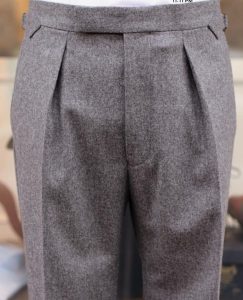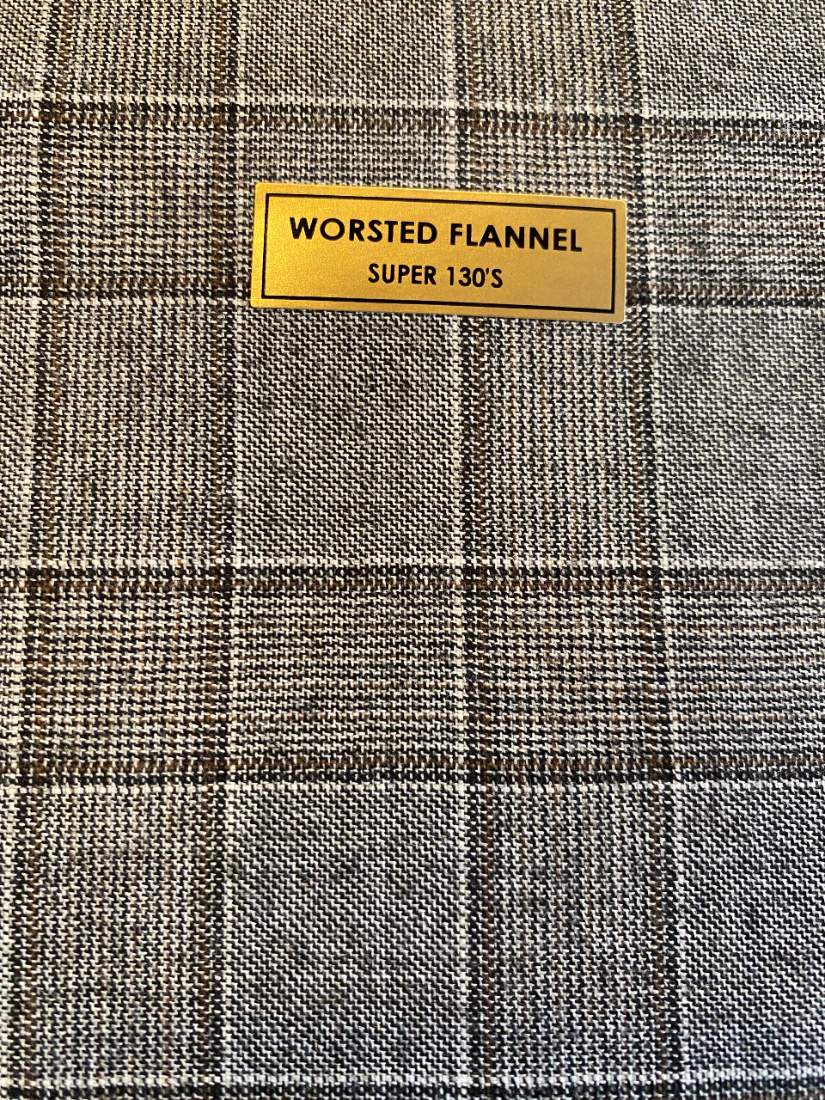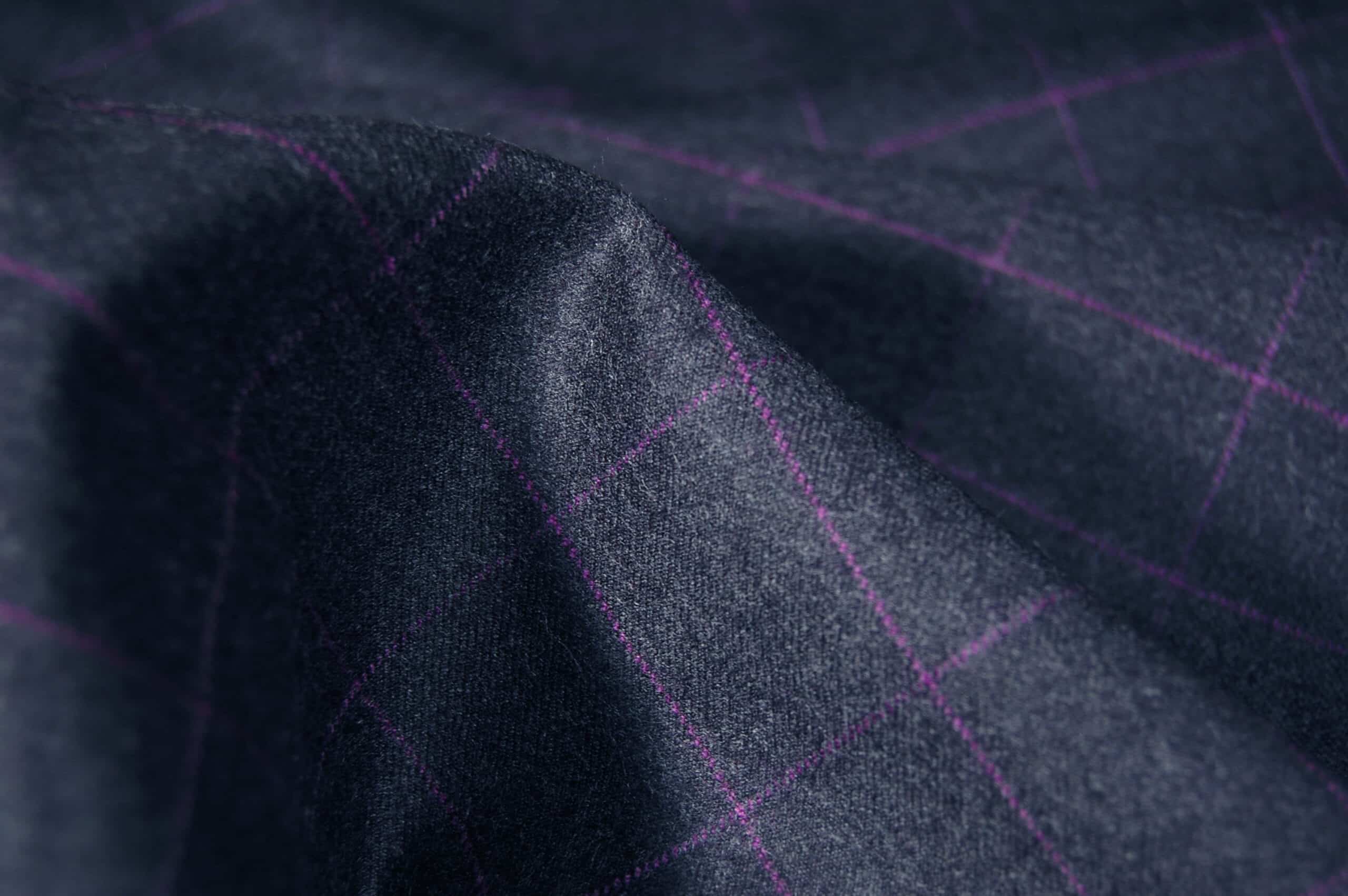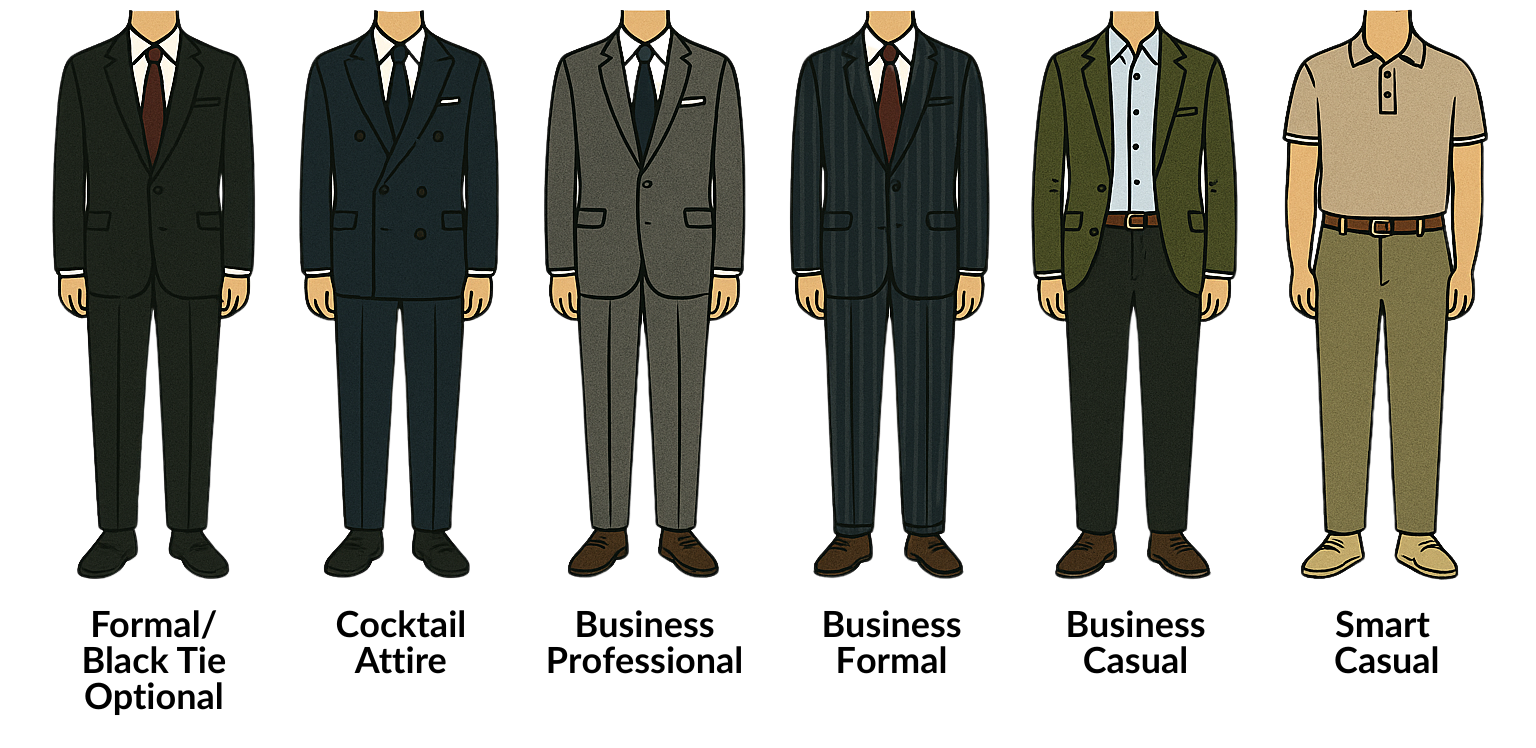As the chill finally begins to set in, our minds naturally wander to cold-weather garments. Though the word “flannel” may conjure up images of the grunge era of the 1990’s, you should know that there’s more to this cloth than plaid shirts. In fact, there are different kinds of flannels, and we’ll dive into what they are in this post.
The Two Types Of Flannel
 This fabric is such a household name that in 1956, Hollywood released a now-classic film called The Man In The Grey Flannel Suit. The term refers specifically to a wool textile that has gone through a process called “milling.” The fibers are treated in such a way as to break them down, which produces the fuzzy handle even a layperson would recognize as flannel.
This fabric is such a household name that in 1956, Hollywood released a now-classic film called The Man In The Grey Flannel Suit. The term refers specifically to a wool textile that has gone through a process called “milling.” The fibers are treated in such a way as to break them down, which produces the fuzzy handle even a layperson would recognize as flannel.
Though overcoats can be and often are made with milled wool, we don’t tend to refer to them as flannel. The term seems to be relegated to shirts, jackets, trousers, and suits.
Generally speaking, flannel is incrementally more casual-looking than a standard worsted wool, which has a smoother appearance and feel. Flannel suits are therefore, a little more defanged compared to their worsted cousins.
Flannel Varieties
As for tailored garments, there are two types of flannel: worsted and woolen. On its face, this is confusing. Isn’t all flannel made of wool and therefore woolen? Also, didn’t we just make a differentiation between flannel and worsted wool a couple of paragraphs ago?
It is, and we did. We’ll explain below.
Worsted
 The worsted version has the nubby feel that flannel is known for, but it specifically uses long-staple fibers that are wound tightly together. Long-staple fibers are known for, amongst other things, a smooth and luxurious feel. When woven tightly together, you get a sumptuous hand that’s similar to your more common worsted wool suit.
The worsted version has the nubby feel that flannel is known for, but it specifically uses long-staple fibers that are wound tightly together. Long-staple fibers are known for, amongst other things, a smooth and luxurious feel. When woven tightly together, you get a sumptuous hand that’s similar to your more common worsted wool suit.
A worsted flannel is made from long-staple fibers that have been through the milling process. This results in a semi-smooth cloth with a touch of flannel nubbiness to it.
Woolen
 The woolen (“woollen” as the British spell it) version is what most of us think of when we hear the word “flannel.” While worsted uses long-staple fibers, its woolen counterpart uses short staple fibers. Because these shorter fibers are more difficult to weave together tightly, it results in a “hairier” cloth. The look is decidedly more casual than worsted flannel.
The woolen (“woollen” as the British spell it) version is what most of us think of when we hear the word “flannel.” While worsted uses long-staple fibers, its woolen counterpart uses short staple fibers. Because these shorter fibers are more difficult to weave together tightly, it results in a “hairier” cloth. The look is decidedly more casual than worsted flannel.
How To Wear Flannel
Again, this cloth has a more casual character than standard worsteds. Here are a few suggestions in terms of how to wear the cloth:

Shirts. It may seem obvious, but a flannel shirt goes a long way in cooler weather when a jacket is just a bit too much. It can’t hurt to have a few in your seasonal rotation.
Grey trousers. This is such a classic menswear item that the sartorial cognoscenti refer to them as “grey flannels.” The combination of these grey pants and a blue sport jacket is timeless, elegant, understated, and versatile.
Sport jacket. A flannel sport coat is somewhat of a silver bullet for cold weather style points. It keeps you warm while still offering a tailored presentation. When you pair it with a custom shirt, jeans, and some dark chelsea or chukka boots, you have a can’t-miss cold weather combination.
Suit. Since the advent of centralized heating in office buildings (remember those?), flannel suits have lost some popularity. Still, their warming properties are fantastic for men who commute in the cold and insist on looking great while they do it. The fuzzy finish pairs beautifully with suede shoes.
Conclusion
It’s 60 degrees and damp as of this writing – the cold is setting in. If you’re like us and want to be ahead of the curve in terms of your wardrobe, now’s the time to make up a flannel garment. Give us a call at 215-310-0219 or email info@henrydavidsen.com for more information.



